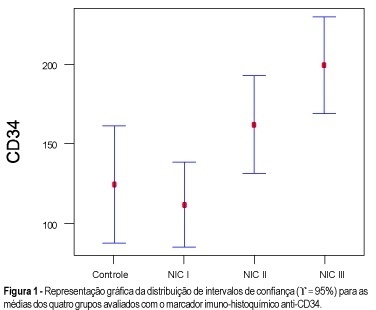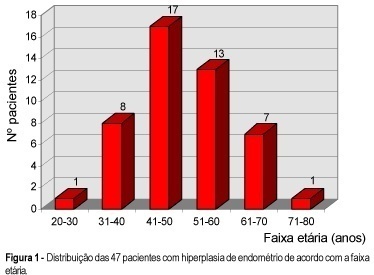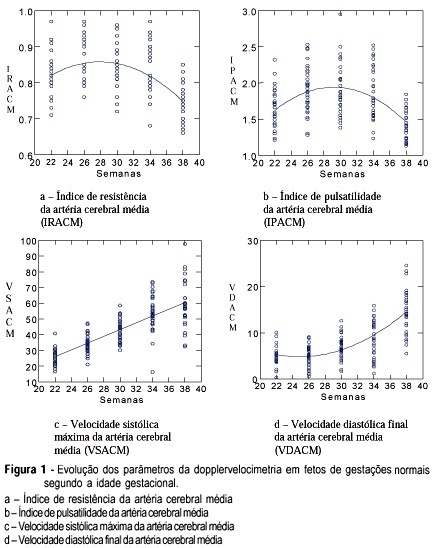Summary
Revista Brasileira de Ginecologia e Obstetrícia. 2000;22(6):347-351
DOI 10.1590/S0100-72032000000600005
Purpose: to analyze the symptoms of premenstrual syndrome (PMS), its duration, time of presentation and pathogenesis. Methods: a questionnaire was applied to 254 women aged 20 to 44 years, without gynecological or clinical conditions affecting their general state or physical well-being, excluding those with amenorreha for more than six months, hysterectomized or pregnant. Results: one hundred and ten women (43.3%) describing at least one intense symptom causing harm to their life, were considered as having PMS. Irritability was presented by 86.4%, tiredness by 70.9%, depression by 61.8%, headache by 61.8%, breast tenderness by 59.1% and abdominal pain by 54.5%. Almost all (94.5%) had more that one symptom, 89.1% presented psychological complaints, and 76.4% associated physical and psychological complaints. Most declared that duration of the symptoms was three to four days (32.4%) or five to seven days (31.4%). Conclusions: the clinical picture of PMS is generally composed of irritability and/or depression, associated with tiredness and headache or breast pain, there being association of physical and psychological symptoms, for 3 to 7 days, and it is difficult to attribute a single etiology to it at this stage of knowledge.
Summary
Revista Brasileira de Ginecologia e Obstetrícia. 2000;22(6):339-345
DOI 10.1590/S0100-72032000000600004
Purpose: to quantify the vessels and epithelial proliferation, applying immunohistochemical staining with anti-CD34 as well as anti-PCNA markers, in intra-epithelial neoplasia of the uterine cervix. Methods: in the present study, 16 patients with CIN III, 16 with CIN II, 21 with CIN I and 11 with normal cervix (control group) were investigated. Slide analysis was performed at the same time by two observers, in 10 consecutive sites using 100X and 400X magnification, both in the highest vascularization (CD34) and proliferative activity sites (PCNA). Results: the means obtained with the use of anti-PCNA in intraepithelial neoplasias were: 78.2% (CIN III), 52.1% (CIN II), 33.3% (CIN I) and 4.6% (control group), while 199.1 vessels (CIN III), 162.0 vessels (CIN II), 111.7 vessels (CIN I) and 124.4 vessels (control group) were quantified using anti-CD34 as a vascular marker. Conclusion: the results showed that both markers, anti-PCNA and anti-CD34, are useful for investigating proliferative and angiogenic activity, respectively. However, anti-PCNA showed better and more accurate results than anti-CD34 in differentiating intraepithelial neoplasias.

Summary
Revista Brasileira de Ginecologia e Obstetrícia. 2000;22(6):333-337
DOI 10.1590/S0100-72032000000600003
Purpose: to evaluate the efficacy of conservative axillary dissection (levels I and II) in the surgical treatment of stage I breast cancer. Methods: the results of 142 mastectomies performed from January/93 to December/98 in patients with clinical stage I breast cancer (T1NO) were evaluated. Removing the axillary lymph nodes present at levels I and II, with the preservation of the pectoralis muscles, the axillary lymph nodes were dissected by the author (LAGB), and subsequently one section of each lymph node was histopathologically evaluated. Quadrantectomy was performed in 138 cases and modified mastectomy (Patey), in 4 cases. The predominance of the T1c (130 cases) was observed. Results: a total of 3,282 lymph nodes were removed (2,456 at level I and 826 at level II), with an average of 23.1 nodes per axilla. Only 68 were histologically involved (2%). "Skip" metastasis was present only in one case (0.7%). Thirty-five false negative cases were observed (24.6%), with involvement of level I in 34 cases (97.1%) and of level II in 2 cases (5.7%). We observed 107 cases with negative axillary lymph nodes (75.4%). Conclusion: the axillary dissection of levels I and II is sufficient to treat the axilla in clinical stage I breast cancer. In clinical stage II and III of the disease, the complete axillary dissection including levels I, II and III is indicated. The interpectoral Rotter group will be removed if surgically suspicious.
Summary
Revista Brasileira de Ginecologia e Obstetrícia. 2000;22(6):325-331
DOI 10.1590/S0100-72032000000600002
Purpose: to evaluate the efficacy of medroxyprogesterone acetate and megestrol acetate in endometrial hyperplasia. Patients and Methods: forty-seven patients with abnormal uterine bleeding were retrospectively evaluated. These patients were submitted to diagnostic uterine curettage and/or endometrial biopsy, with histopathological finding of endometrial hyperplasia. Patients with hyperplasia without atypia received 10 mg/day oral medroxyprogesterone acetate during 10 to 12 days a month. Those with hyperplasia with atypia received 160 mg/day oral megestrol acetate continuously. The length of treatment ranged from 3 to 18 months. Control endometrial biopsy and/or uterine curettage were performed 3 and 6 months from the beginning of treatment, and then periodically to evaluate whether or not regression of hyperplasia occurred. Results: forty-two patients with endometrial hyperplasia without atypia and 5 with hyperplasia with atypia were included. The mean age of the patients was 49.5 ± 10.6 years (22 to 72 years), 70.2% aged over 45 years. Medroxy-progesterone acetate was effective in promoting regression of 83.2% (35/42) of hyperplasia without atypia, and megestrol acetate in 80% (4/5) of hyperplasia with atypia. Despite treatment, lesions persisted in 16.8% (7 cases) of hyperplasia with atypia and in 20% (1 case) of hyperplasia without atypia. No progression to endometrial cancer was seen during the follow-up period of 3 months to 9 years. During follow-up, we found that 18 patients (38.3%) showed amenorrhea, 12 (25.5%) menstrual cycle regulation, and 17 (36.2%) persistent abnormal uterine bleeding and underwent total abdominal hysterectomy. Histological examination of the uterus showed 8 patients with persistence of hyperplastic lesion, 4 with leiomyoma, 3 with adenomyosis, 1 with diffuse uterine myohypertrophy, and 1 with normal uterus, despite regression of the hyperplastic lesions in 9 of the 17 patients. Conclusions: the treatment of endometrial hyperplasia with medroxyprogesterone acetate and megestrol acetate can be a safe alternative for women who refuse to have their uterus removed or those at high risk for surgery. However, a careful monitoring of the endometrium is needed. This can be achieved with periodical endometrial biopsy, transvaginal ultrasonography, and evaluation of the symptoms.

Summary
Revista Brasileira de Ginecologia e Obstetrícia. 2003;25(6):437-442
DOI 10.1590/S0100-72032003000600009
PURPOSE: to study the evolution of the resistance and pulsatility indices, maximum velocity, final diastolic velocity and time of acceleration of the middle cerebral artery of fetuses between 22 and 38 weeks of gestation. METHODS: a prospective and longitudinal observational study was conducted on 33 fetuses of normal pregnant women evaluated between 22 and 38 weeks of pregnancy. The gestational age was determined on the basis of the date of the last menstruation and/or by ultrasound examination during the first trimester. Doppler ultrasound examination was performed by a single observer using an Image Point 1800 (Hewlett Packard) apparatus equipped with a multiple frequency transducer. For the acquisition of the Doppler tracing of the middle cerebral artery, the sample indicator was calibrated for a sample volume of 1 mm³ and placed on the anterior middle cerebral artery as close as possible to the skullcap. The insonation angle was kept between 5º and 19º and the filter was adjusted to a frequency of 50-100 Hz. The newborn infants were evaluated in order to confirm that the fetuses were vigorous and adequate for gestational age. RESULTS: the results obtained for the resistance and pulsatility indices revealed a 2nd-degree equation, representing a parabola whose values for the resistance index were 0.81 during the 22nd week and 0.75 during the 38th week. The pulsatility index was 1.59 during the 22nd week and 1.45 during the 38th week. Maximum systolic velocity increased progressively along pregnancy, with values of 26.3 cm/s during the 22nd week and 57.7 cm/s during the 38th week. Final diastolic velocity increased progressively from the 26th week (5.21 cm/s) to term (14.6 cm/s). Acceleration time increased significantly only between 26 and 30 weeks, with values of 0.04 s during the 26th week and 0.05 s during the 30th week. CONCLUSION: it was concluded that the evolution of the resistance and pulsatility indices and of maximum systolic velocity were similar to those of most studies described in the literature. Acceleration time presented few modifications during the evaluated gestational weeks.

Summary
Revista Brasileira de Ginecologia e Obstetrícia. 2003;25(6):431-436
DOI 10.1590/S0100-72032003000600008
PURPOSE: to analyze maternal death cases that occurred at the "Hospital de Clínicas de Porto Alegre", a reference university hospital for high-risk pregnancies in the state of Rio Grande do Sul, Brazil. METHODS: we carried out a retrospective study of medical records of 10- to 49-year-old women who died at the hospital between 1980 and 1999. Deaths related to pregnancy and puerperium were analyzed independently of the kind and duration of pregnancy. The causes were classified into direct obstetric, indirect obstetric and nonobstetric, according to their association with pregnancy, delivery and puerperium disorders. RESULTS: a total of 81 patients with a mean age of 28.5 years were studied. The maternal mortality rate was 109 per 100,000 live births. Direct obstetric causes made up 61.7% of deaths. Indirect causes made up 23.5% of deaths. Nonobstetric causes made up 15.0% of the total. Among direct obstetric causes, arterial hypertension (18.5%), post-cesarean infection (16%), and septic abortion (12.3%) were the most prevalent. The main maternal mortality events among indirect obstetric causes were cardiopathy (8.6%), acute fatty liver disease (3.5%), and systemic lupus erythematosus (2.5%). Among the nonobstetric causes, malignant neoplasia (7.4%) and AIDS (3.7%) were the most important. CONCLUSIONS: the prevailing causes of maternal death have not changed in the last two decades. The main cause is still hypertension. There is an expressive number of deaths related to cesarean section and infections. The high prevalence of direct obstetric causes shows the low maternal mortality prevention capacity of our health care system.
Summary
Revista Brasileira de Ginecologia e Obstetrícia. 2003;25(6):425-430
DOI 10.1590/S0100-72032003000600007
PURPOSE: to determine whether prenatal sonographic findings and uterine contractions can predict neonatal motor outcome in fetuses with open spina bifida. METHODS: we evaluated retrospectively 53 fetuses with open spina bifida from 1993 to 2001. These fetuses were born and followed-up at the fetal medicine units of the Hospital São Paulo ("Universidade Federal de São Paulo") and the "Hospital Santa Joana". The influence of the alterations observed through ultrasound scan on neonatal muscular strength (macrocrania, microcrania, level of the spinal column opening, clubfoot and type of fetus position) was evaluated. The influence of uterine contractions on neonatal motor outcome was also evaluated. All deliveries were made through cesarian section. c² and Fisher tests were used for categorical comparisons. A p<0.05 was considered significant. RESULTS: Fifty-three cases of isolated open spina bifida were studied. Alterations of the cranial circumference size and the level of the lesion did not interfere in the neonatal motor perfomance. However, clubfoot and breech position showed to be predictors of an unfavorable neurological prognosis (p<0.05). Twenty-tree (43%) infants had clubfoot. Eighteen (78.3%) of these had abnormal leg movements. No infant in breech presentation (n=10) showed normal motor function. The presence of uterine contractions and the premature membrane rupture, observed in 13 fetuses (87%), were also linked to the alteration of neonatal muscular strength (p<0.05). CONCLUSION: clubfoot and breech presentation are ultrasonographic findings useful in predicting neurological neonatal outcome. Uterine contractions and premature membrane rupture are associated with poor motor neonatal outcome.
Summary
Revista Brasileira de Ginecologia e Obstetrícia. 2003;25(6):419-423
DOI 10.1590/S0100-72032003000600006
PURPOSE: to evaluate the perinatal outcomes of pregnancies complicated by oligohydramnios, not due to premature rupture of membranes (PRM), diagnosed until the 26th week of gestation. PATIENTS AND METHODS: we analyzed retrospectively the cases of oligohydramnios that occurred from January 1994 to December 2000, and were diagnosed until the 26th week of gestation. Oligohydramnios was present when the amniotic fluid index was less or equal to 5.0 cm. After diagnosis the patients were followed-up with serial ultrasound evaluation, with emphasis on the maintenance of the oligohydramnios state. When remission of the oligohydramnios occurred, patients remained in the study. Cases due to PRM, fetal death detected on the first examination and the women who gave birth in another institution were excluded from the study. Concerning the patients, the presence of clinical and obstetric diseases was investigated. As regards the newborns, we evaluated birth weight, time of admission/death, occurrence of death or malformations. RESULTS: twenty-seven cases of oligohydramnios were analyzed. Thirteen fetuses had congenital anomalies, and among them, eight had anomalies of the urinary tract, four of the nervous system and one had cystic hygroma. Fourteen patients had a clinical or an obstetric disease, mainly hypertension (10 cases). In addition, we found three cases of placenta previa and one case of thyropathy. There were thirteen fetal deaths and fourteen neonatal deaths. CONCLUSION: oligohydramnios not due to PRM, occurring in the second trimester of gestation, independent of the etiology or the presence of congenital anomalies, was associated with a fatal perinatal result.